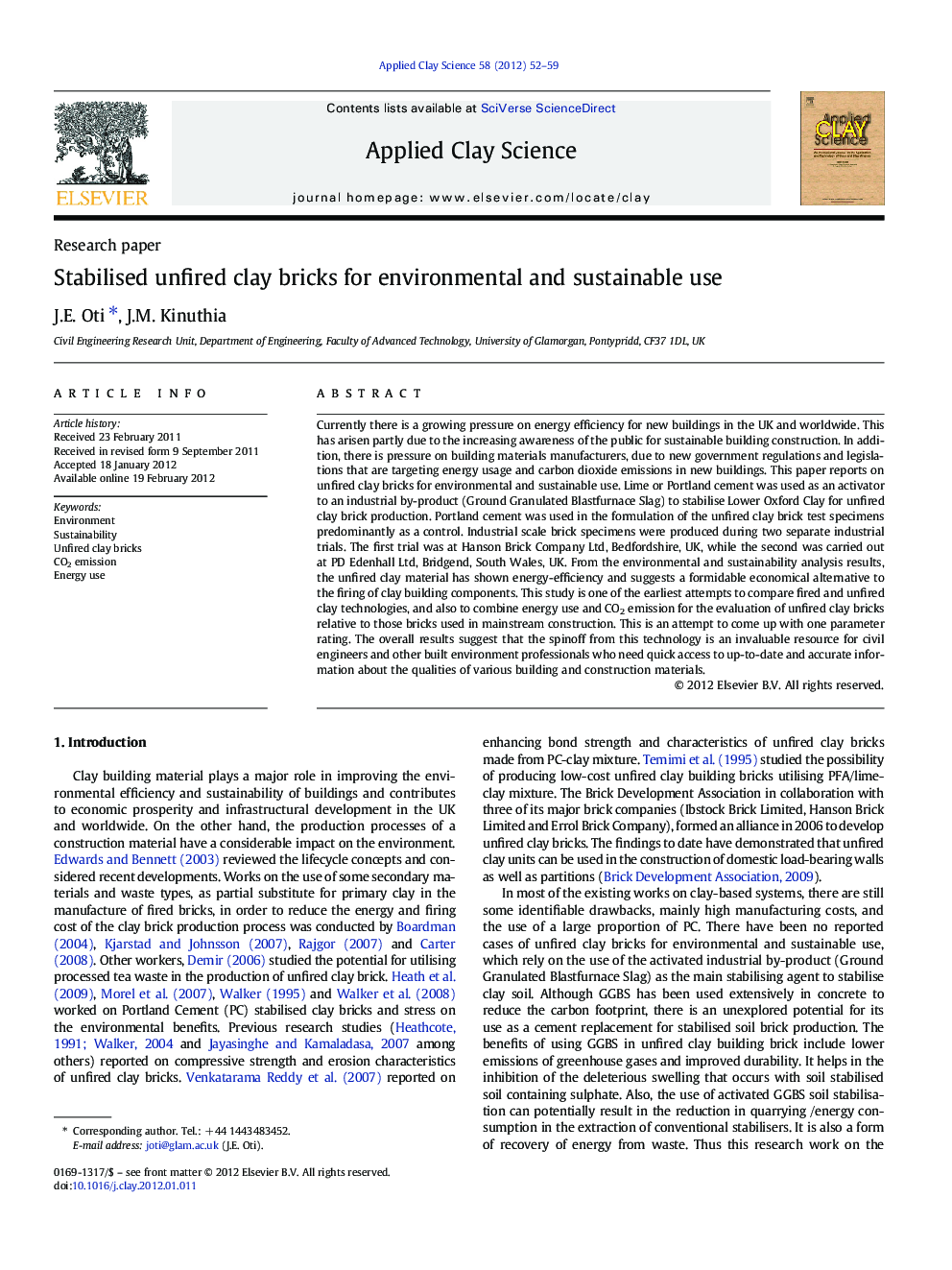| Article ID | Journal | Published Year | Pages | File Type |
|---|---|---|---|---|
| 1695302 | Applied Clay Science | 2012 | 8 Pages |
Currently there is a growing pressure on energy efficiency for new buildings in the UK and worldwide. This has arisen partly due to the increasing awareness of the public for sustainable building construction. In addition, there is pressure on building materials manufacturers, due to new government regulations and legislations that are targeting energy usage and carbon dioxide emissions in new buildings. This paper reports on unfired clay bricks for environmental and sustainable use. Lime or Portland cement was used as an activator to an industrial by-product (Ground Granulated Blastfurnace Slag) to stabilise Lower Oxford Clay for unfired clay brick production. Portland cement was used in the formulation of the unfired clay brick test specimens predominantly as a control. Industrial scale brick specimens were produced during two separate industrial trials. The first trial was at Hanson Brick Company Ltd, Bedfordshire, UK, while the second was carried out at PD Edenhall Ltd, Bridgend, South Wales, UK. From the environmental and sustainability analysis results, the unfired clay material has shown energy-efficiency and suggests a formidable economical alternative to the firing of clay building components. This study is one of the earliest attempts to compare fired and unfired clay technologies, and also to combine energy use and CO2 emission for the evaluation of unfired clay bricks relative to those bricks used in mainstream construction. This is an attempt to come up with one parameter rating. The overall results suggest that the spinoff from this technology is an invaluable resource for civil engineers and other built environment professionals who need quick access to up-to-date and accurate information about the qualities of various building and construction materials.
► Industrial scale brick specimens were produced during two separate trials. ► Unfired clay material showed better energy-efficiency than fired clay. ► This study is one of the earliest attempts to compare fired and unfired clay. ► The earliest attempts to combine energy use and CO2 emission for unfired clay brick. ► Valuable resource to professionals on various non-traditional materials.
